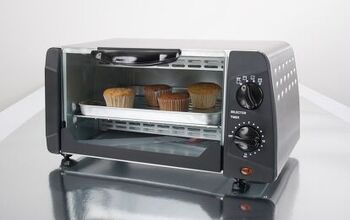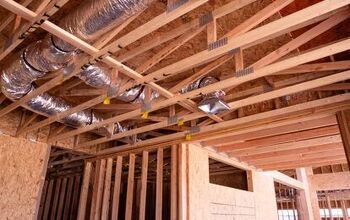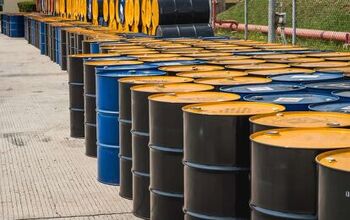15 Ways To Make Your Kitchen More Eco-Friendly

Some believe the kitchen is the most important room in a home, and it’s often the most commonly used room as well. This makes the kitchen a great place to start when trying to make your home more environmentally friendly. If you are trying to reduce your carbon footprint, you’ll be happy to know there are many ways you can make your kitchen more eco-friendly.
To help make your kitchen more eco-friendly, add a compost bin and recycling bin near your trash can. Try to shop and cook in bulk, and avoid buying individually wrapped items. Use compostable trash bags and bring reusable bags when you go shopping. Swap out old light bulbs and appliances for energy-saving models, and use a water filter to stop buying bottled water.
With so much cooking, cleaning, and action happening in and around your kitchen, it’s no surprise there’s also a lot of energy use and waste occurring in this room. Whether you want to help do your part to curb global warming or are just sick of how much water and energy you use, there are lots of easy ways to shrink your carbon footprint and make your kitchen more eco-friendly.
15 Easy Ways To Make Your Kitchen More Eco-Friendly
1. Start Using A Compost Bin
One way to make your kitchen and lifestyle more eco-friendly is to use a compost bin. If you aren’t using a compost bin, there’s a good chance most of your organic waste will end up in a landfill.
Instead of throwing your vegetable scraps, coffee grinds, and egg shells into a garbage bag, add them to your compost. A compost bin will make your kitchen more eco-friendly and provide you with incredible compost that will help you fertilize your garden.
2. Replace Your Faucet With A Water-Saving Option
Using too much water is easy to do, especially if you aren’t paying a lot for water usage. Regardless of whether you live in a dry or wet climate, you must conserve water. Fresh drinking water is a precious resource that isn’t available in every country.
To reduce the amount of water you waste, swap out old faucets that let water flow quickly with modern water-saving faucets. Faucets with multiple pouring speeds also work great. This will help reduce your carbon footprint, and maybe even help lower your water bill.
3. Place A Recycling Bin Next To Trash
Recycling is important, but it’s easy to forget to recycle some items. This is especially true if your recycling bin is far away, but your trash can is close. You may not even know what items you can recycle.
To improve your recycling habit, consider installing a recycling bin next to your trash. This will make it much easier for you to sort your landfill trash from your recycling.
4. Start Using Reusable Towels
Paper towels make cleaning easy, but they can also create a lot of paper waste. If you are going through paper towel rolls quickly, consider opting for reusable cloths. You can have cloths for wiping countertops, cleaning up spills, and even separate linen napkins for dining.
Eliminating the use of paper towels can make your home more eco-friendly, as it reduces your paper usage. It can also lower your monthly expenses, as paper towel costs can increase over time.
5. Switch To Eco-Friendly Cleaning Products
Cleaning products are sometimes loaded with harsh man-made chemicals. Some of these chemicals can even harm the environment. If you currently use harsh cleaning products, consider switching to environmentally friendly products.
You may need bleach and other tough cleansers occasionally, but look for environmentally friendly everyday cleaning supplies to make your kitchen more environmentally healthy.
6. Buy Compostable Garbage Bags
Plastic takes forever to break down, so most items made from plastic are considered harmful to the environment. Plastic garbage bags can stick around for hundreds of years before they break down, but not all garbage bags are this dangerous.
Look for bio-compostable plastic, or use thick paper bags for your trash whenever possible. Eco-friendly trash bags often cost a bit more, but it usually differs a few cents per bag.
7. Buy Fewer Individually Wrapped Goods
When you go shopping for your home, make sure you look at how your items are packaged. Individually packed items might make weekly meal prep easier, but the extra packaging can harm the environment, especially if the packaging isn’t recyclable.
Buy items with less packaging, or packaging that is 100% recyclable. This will reduce the amount of trash accumulated in your kitchen.
8. Use A Water Filter Instead Of Bottled Water
There are endless ways to filter your water these days. You can buy a Brita water filter pitcher, or a reverse osmosis system that costs thousands of dollars. Regardless of how you filter your water, ensure you have some sort of water filtration in your kitchen.
Having clean and filtered water eliminates the need to buy bottled water. Using filtered water and a reusable water bottle can help to significantly reduce your single-use plastic usage.
9. Change Out Old Lights For Energy-Saving Bulbs
One easy way to make your kitchen (and entire home) more eco-friendly is to swap out old light bulbs for energy-saving ones. Using energy-saving bulbs can lower your electric bill. This switch can also make your home more eco-friendly by using less electricity and buying fewer bulbs.
10. Use Cloth Produce And Grocery Bags
Grocery bags, especially the plastic kind, leave a bigger carbon footprint than you’d like. Some regions have started to eliminate plastic bags, or at least charge for them, but others have not.
Instead of using plastic bags at the grocery store, bring your reusable bags. This will eliminate all the extra single-use plastic bags that collect in your kitchen over time.
11. Turn Off Extra Freezer And Fridge When Not In Use
If you have a mini fridge or an extra freezer in your home, ensure it is only turned on when you need it. You may need your big freezer before cooking a holiday feast, but not in the spring or fall.
Try to keep extra fridge and freezer devices off and empty when you don’t need them. This will decrease your energy usage and make your home more eco-friendly.
12. Choose Energy-Efficient Appliances
If you love to cook in your kitchen, your appliances probably get lots of use. It’s great to use all your kitchen gadgets, but try to swap out any old electricity-sucking appliances for new energy-saving models.
This investment may cost a lot up front, but over time you will notice savings on your energy bill. Furthermore, you will be decreasing your kitchen’s carbon footprint.
13. Buy And Cook In Bulk
Buying in bulk is not only a great way to save money, it’s also a good way to make your kitchen more eco-friendly. Buying in bulk usually means fewer containers and less waste.
Bulk cooking tends to result in fewer dishes and appliances, since you can do lots of cooking in one day. Bulk purchasing and cooking is a great way to stay ahead of meal prep while being more environmentally conscious.
14. Use Beeswax Wraps And Reusable Containers
Do your best to avoid to-go containers made of styrofoam or single-use plastic. Instead, opt for durable and long-lasting food storage containers. This helps reduce landfill waste.
Instead of constantly reaching for plastic wrap, consider using reusable and environmentally friendly beeswax wraps. They serve the same purpose and you can wash and reuse them many times.
15. Run Dishwasher When It’s Full
Using a dishwasher in energy-saving mode can save a lot of water, especially compared to washing dishes by hand. Still, it’s important you only run your dishwasher when it's closer to full than empty.
Waiting to run your dishwasher means saving water and electricity, which are both great ways to make your kitchen more eco-friendly.
Summing Up Ways To Make Your Kitchen More Eco-Friendly
The kitchen is often the most-used room in the home. It can also be the room that uses the most energy and creates the most waste. To make your home more eco-friendly, swap out old appliances and light bulbs for energy-efficient ones. Use a compost bin, and add a recycling bin next to your trash to promote recycling. Use reusable water bottles and reusable trash bags to eliminate single-use plastics in your home.
Related Guides:
- How To Dispose Of A Microwave (3 Eco-Friendly Options)
- Can You Recycle Coffee Bags? (Find Out Now!)
- Laundry Detergent Alternatives (Cheap & Natural Options)

Tom Gaffey is an expert writer who currently resides in Washington D.C. Tom has a passion for real estate and home improvement writing, as well as travel and lifestyle writing. He lived the last twelve years in Hawaii where he worked closely with luxury resorts and event planners, mastering his knowledge of aesthetics and luxury products. This is where he found his passion for home improvement and a keen interest in DIY projects. Currently, Tom resides in Washington D.C, and also working on his debut fiction novel.
More by Tom Gaffey


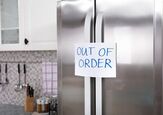








![The 10 Best Table Saws - [2022 Reviews & Buyer's Guide]](https://cdn-fastly.upgradedhome.com/media/2023/07/31/9070645/the-10-best-table-saws-2022-reviews-buyer-s-guide.jpg?size=350x220)
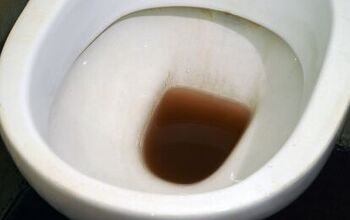
![10 Best Electric Lawn Mowers - [2022 Reviews & Top Rated Models]](https://cdn-fastly.upgradedhome.com/media/2023/07/31/9070486/10-best-electric-lawn-mowers-2022-reviews-top-rated-models.jpg?size=350x220)








